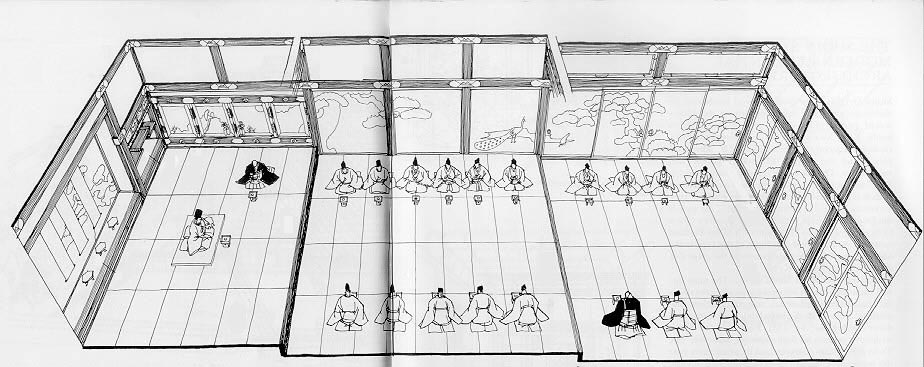Originally built between 1601 and 1603 under the supervision of Itakura Katsushige, Nijo Castle epitomized the political and military power of Tokugawa Ieyasu. Following the Tokugawa victory at Sekigahara (1600), Ieyasu constructed this seemingly gargantuan monument in the heart of Kyoto, not only as a central location for |
a shogunal palace, but also as a reminder of his indomitable strength to the citizens of what was once the center of imperial authority. While none of the castles in Japanese history can boast of being completely fortified structures, Nijo was considered to be particularly unfortified. Perhaps flaunting an air of arrogance by implying that he does not need to fear attack, Ieyasu’s Nijo Castle more closely resembled a princely estate than a defensive structure. | Ornately decorated by the
Kano family, the principal structure was made up of 33 rooms and was located on the
eastern edge of a 70 acre compound. Upon the completion of Nijo Castle in 1603,
Tokugawa Ieyasu held a meeting with members of the court and the military in Ohiroma,
the most formal room in the castle. Ohiroma, which possessed elements of early shoin-style |
architecture, was intricately
designed to reflect the social hierarchy of those in attendance. Other elements of
Nijo Castle include the Karamon Gate of Nijo Castle's Ninomaru Castle. The Karamon
Gate is said to have come from Hideyoshi’s Momoyama Castle. Iemitsu built the Ninomaru Palace between 1624 and 1626. |


